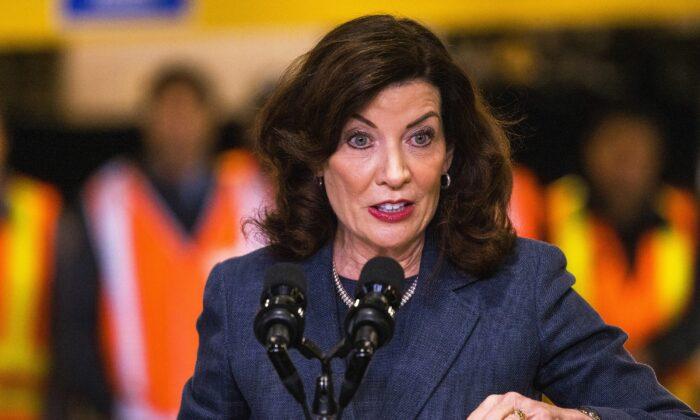New York’s state government rejected requests from offshore wind energy developers who asked to re-negotiate contracts amid elevated inflation and rising costs.
The state denial could force some developers whose contracts may not cover project costs to scrap plans to sell power to customers in New York and cancel or delay projects, as happened with some offshore wind projects in Massachusetts. Developers were looking to renegotiate contracts on four offshore wind and 86 land-based renewable projects.
Construction of renewable projects is key to the climate-related agenda of President Joe Biden’s administration and several states, including New York, in their attempts to rely more on alternative sources of energy other than oil and gas. Developers sought to renegotiate the contracts to include inflation adjustments, among other cost increases, because some agreements no longer cover the rising cost of building and financing projects in the current high inflation and high interest rate environment.
The New York State Public Service Commission (NYPSC), the state’s main regulator over utilities, rendered its decision rejecting the firms last week and said that it wants to “preserve the robust competitive bidding process that provides critically needed renewable energy resources to New York.”
“The Commission has repeatedly stated that competition in the procurement process is necessary to protect ratepayers and provides the soundest approach to mobilize the industry to achieve our critical State goals dependably and cost-effectively, and we do so again through today’s action,” Mr. Christian continued.
The request would have led to a 6.7 percent increase in residential utility costs and 10.5 percent for commercial customers on their monthly bills, state officials said. The companies that filed the petition include Empire Offshore Wind LLC, Beacon Wind LLC, Sunrise Wind LLC, and the Alliance for Clean Energy New York.
The coalition of developers and wind companies said that without the extra funding, their projects may not come to fruition.
Molly Morris, the head of Equinor Renewables Americas, said the firm and its partner BP would evaluate its projects after the decision. “These projects must be financially sustainable to proceed,” she said in a statement to several news outlets.

In response to the decision, New York Governor Kathy Hochul released an “action plan” to support the green energy sector and reinforce the state’s commitment to reaching those goals. The state said it will launch an accelerated procurement process for offshore and onshore projects “to backfill any contracted projects which are terminated.”
“Make no mistake: my commitment to building a clean energy economy is as strong as ever,” the governor said. “New York will continue to advance an affordable clean energy future, and I have directed state agencies to undertake an accelerated process to procure renewable energy as affordably and quickly as possible.”
If some renewable developers cancel projects, New York could have a hard time reaching its goals of having at least 70 percent of electric load served by renewables by 2030, development of 9,000 megawatts of offshore wind by 2035, and meeting statewide demand with zero emissions by 2040.
However, the situation in New York doesn’t appear to be unique. Orsted, the world’s largest offshore wind farm developer, said in August it may see U.S. impairments of $2.3 billion due to supply chain problems, soaring interest rates, and a lack of new tax credits.
“The situation in U.S. offshore wind is severe,” said Chief Executive Mads Nipper as the firm’s Ocean Wind 1, Sunrise Wind, and Revolution Wind projects are impacted by several supplier delays.
New York’s decision also comes as the Biden administration continues to take an aggressive stance on expanding alternative energy development around the United States.
In the days after he took office in 2021, President Biden issued an executive order to increase opportunities for the offshore wind industry. In March 2021, his administration later came up with goals to deploy 30 gigawatts of offshore wind energy by 2030.







